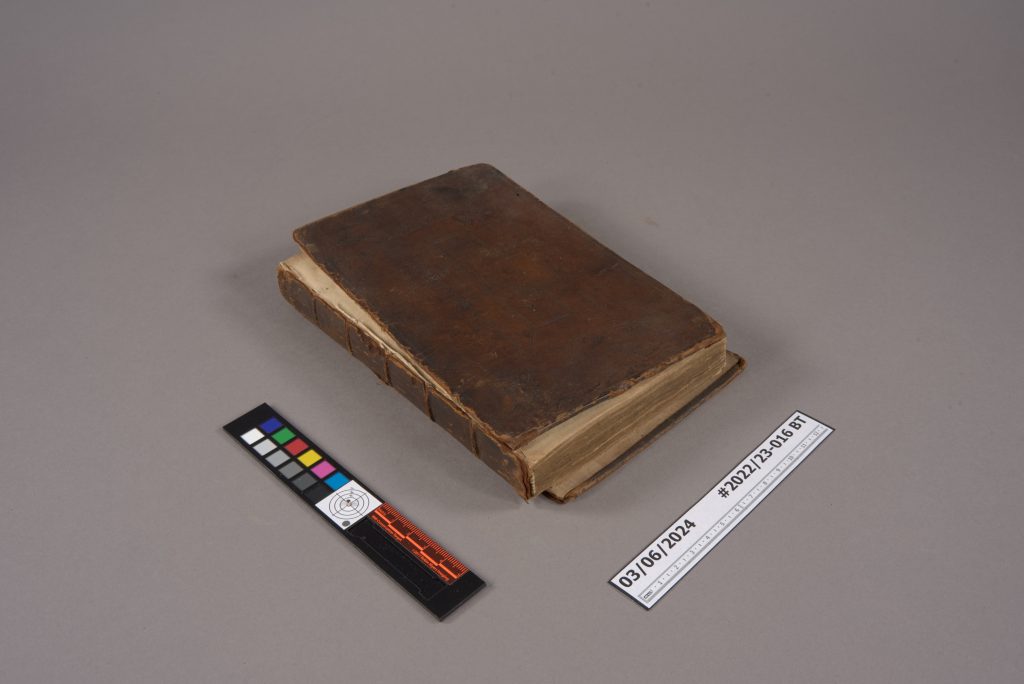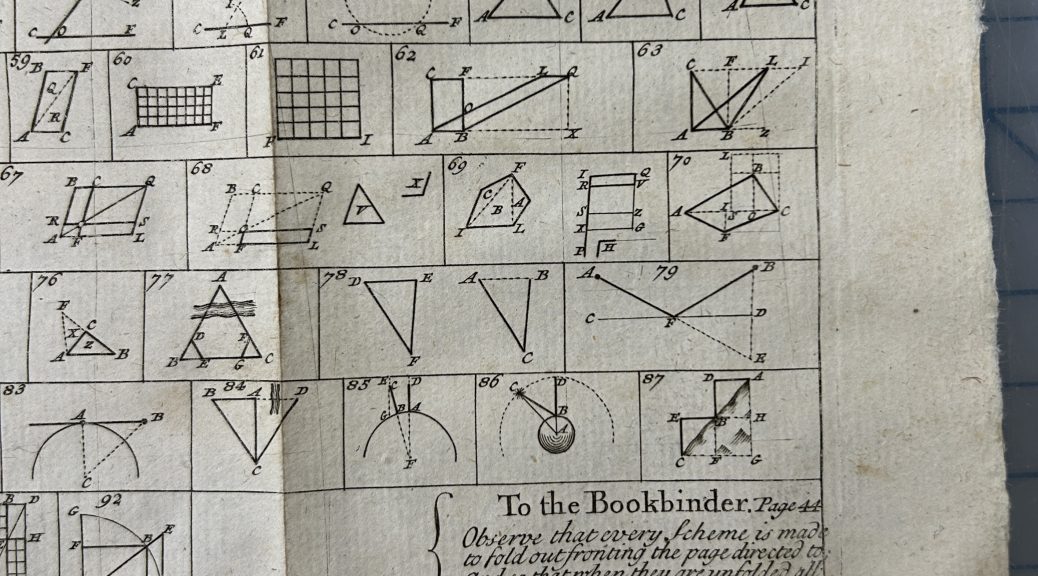The ancient Greek mathematician Euclid is widely known as the father of geometry, and his 13 book treatise, Elements, was one of the most famous mathematical texts in antiquity. The original text (written around 300 BCE) is no longer available to us, but it was widely copied and translated into many different languages over the centuries, with the first English translation appearing in 1570 CE. There have been many editions of the book as scholars analyze and retranslate extant manuscript copies, along with early commentaries and annotations.
 This 1719 English edition recently came across my bench with detached boards and powdery leather, fairly common condition problems for a leather trade binding from this period. The textblock was a bit dirty, with grime building up particularly at the folded engravings. As I was surface cleaning the first of them, I noticed some interesting instructions for the bookbinder included at the bottom of the print:
This 1719 English edition recently came across my bench with detached boards and powdery leather, fairly common condition problems for a leather trade binding from this period. The textblock was a bit dirty, with grime building up particularly at the folded engravings. As I was surface cleaning the first of them, I noticed some interesting instructions for the bookbinder included at the bottom of the print:

The binder did successfully follow the instructions to make the diagrams visible “clear out of the book.”
 It’s a useful arrangement to have the sheet extend that far out, so as the reader is going through the steps used to construct an object using a straightedge and compass, they can view the entire diagram and follow along visually. Otherwise, if the diagrams were bound in the usual way, the recto of one page might obscure the diagram you were looking at and you would be forced to flip back and forth.
It’s a useful arrangement to have the sheet extend that far out, so as the reader is going through the steps used to construct an object using a straightedge and compass, they can view the entire diagram and follow along visually. Otherwise, if the diagrams were bound in the usual way, the recto of one page might obscure the diagram you were looking at and you would be forced to flip back and forth.
What I love about these simple instructions is that they provide a little glimpse into the design and production of this object. Many tradespeople contributed to making the book, but they were working in different places and at different times. Including instructions for assembly in the prints is very helpful. For books sold in sheets, the printer or book seller may never meet the binder and be able to explain how it should be assembled. Had the book come to the lab in a worse state, with broken sewing or parts detached, that little note might also be useful for me.


